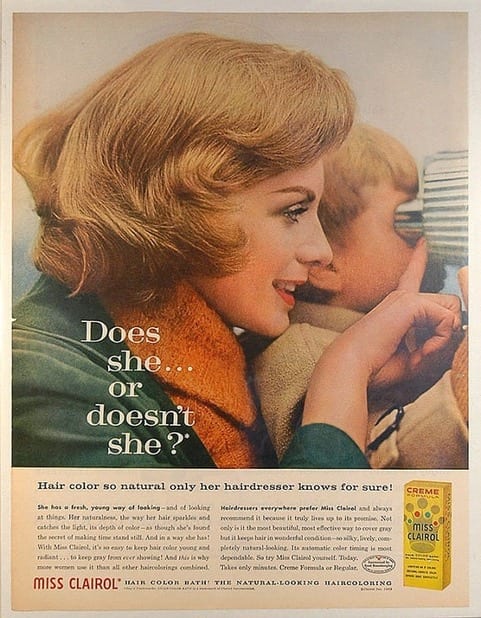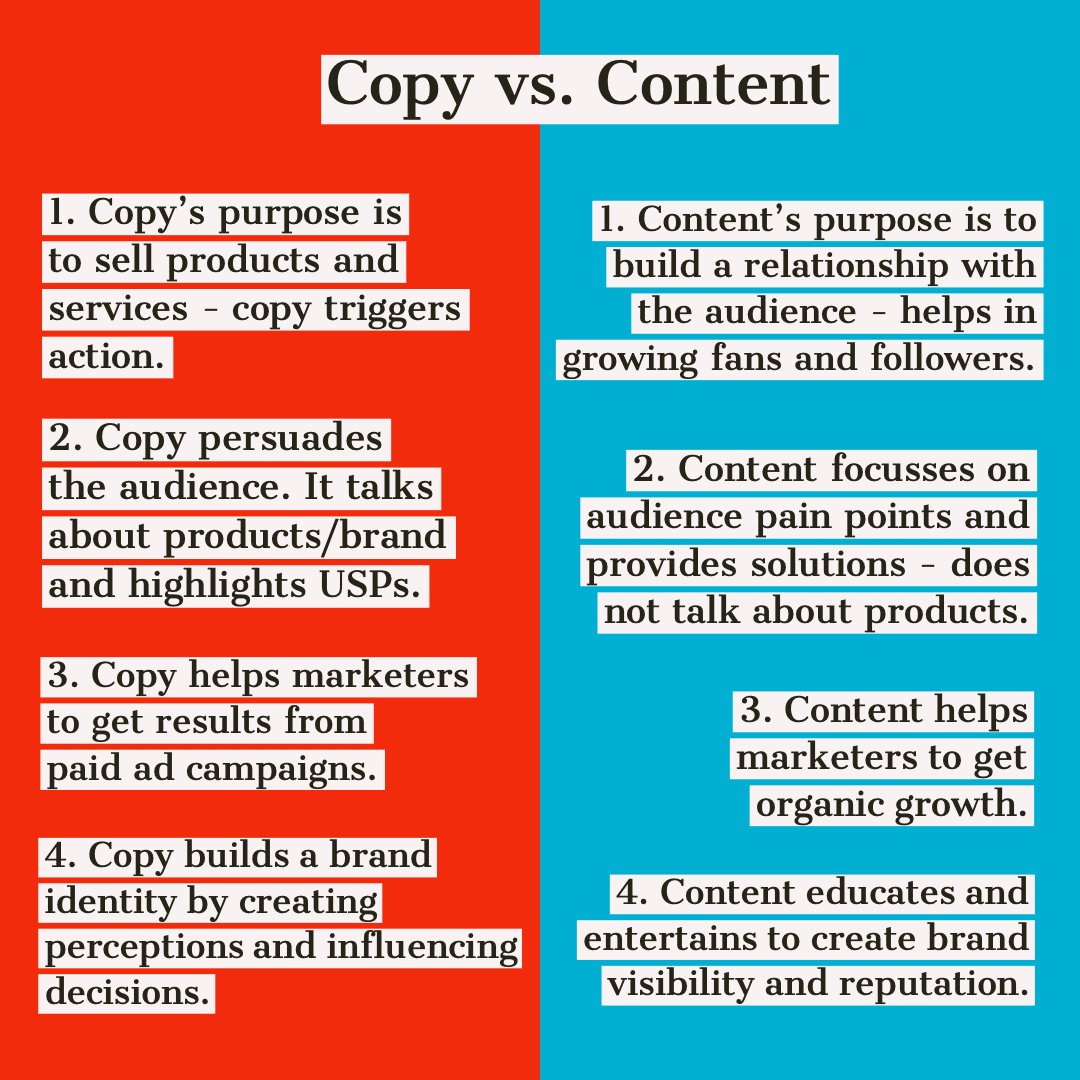Copy vs. Content: Their Roles
Many marketers confuse copy with content and the other way around. The truth is that copywriting and content creation are two sides of a coin – they complement each other. One communicates the USPs of products and services, while the other, shy away from talking about business offerings.
Understanding the difference helps marketers make the best of both types of brand communication.
Not sure about how copy and content aren’t similar and yet, work together? Let’s figure out:
What is Copy/Copywriting?
“Copywriting is the act or occupation of writing text for the purpose of advertising or other forms of marketing” – Wikipedia
The purpose of writing copy is to sell products.
A skillful copywriter creates advertising messages that convince buyers into taking an action.
Take a look at the ad copy in the following print ad from Miss Clairol’s hair color:
The copy here is a witty wordplay that communicates about the natural feel and quality of the product.
Copy’s role is persuasion. It gives the audience a reason to believe that the product or brand fulfills an expectation (tangible or intangible).
Back in the times when mainline advertising was popular, marketers used copywriting in print, radio, and television to run targeted ad campaigns.
Today, digital marketers use ad copy on websites, marketing emails, and paid ad campaigns (on Google Adwords, Facebook, Instagram, and Twitter, etc.).
Take a look at this example of website copy from Clif Bar and Company, the popular nutrition bar brand:
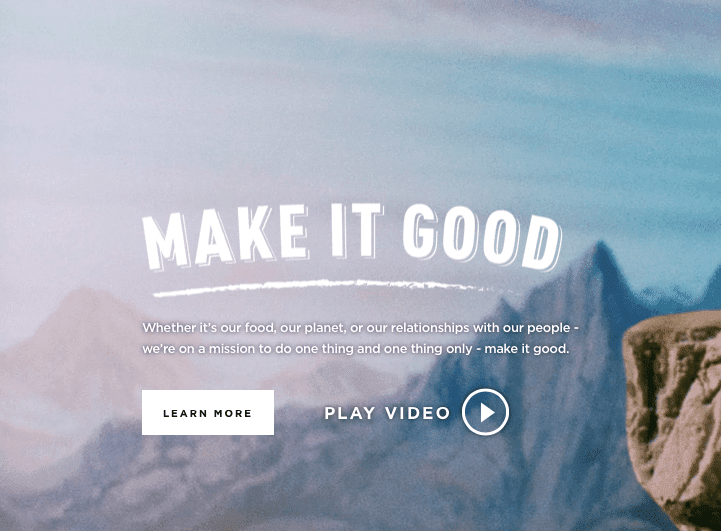 The words here have the same intention but are delivered from a different channel.
The words here have the same intention but are delivered from a different channel.
Collateral like brochures, direct mail, flyers, banners, and hoardings use advertising copy – these marketing materials were prevalent in the mainline advertising era as much as they are today.
Take a look at this contemporary outdoor ad from Toyota, for instance:
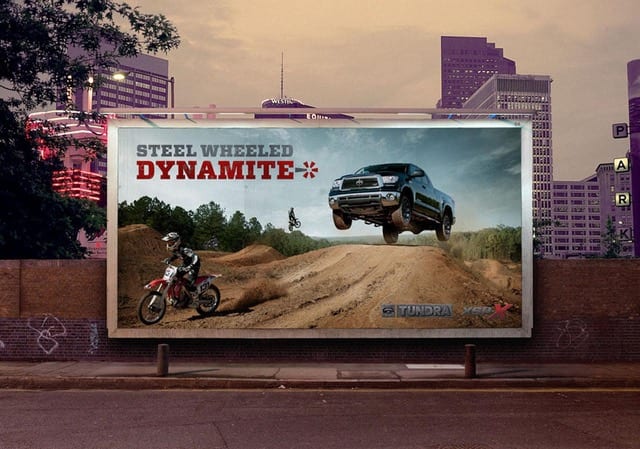 “The first step in persuasion is to entice your target audience to imagine doing the thing you want them to do.” -Roy H. Williams
“The first step in persuasion is to entice your target audience to imagine doing the thing you want them to do.” -Roy H. Williams
Copywriting surprises the audience; it tells a story with attention-grabbing words and imagery. The audiences never watch ads or read copy because they want to, they do because they end up finding the message interesting. Copy does not help solve audience problems; it attracts attention and offers emotional experiences.
What is Content?
“In publishing, art, and communication, content is the information and experiences that are directed towards retro style an end-user or audience.” – Wikipedia
Content is any form of communication that educates or entertains. In fact, all media that we consume is content – blogs, online videos, TV, magazines, radio, podcasts, and newspapers, etc. Content has been there ever since the advent of mass media.
Content for the purpose of marketing a business became prominent after the emergence of the internet, search engines, and social media, in the early 2000s. These new communication platforms paved the way for online users to search for solutions to their problems.
What’s more? Online channels gave individuals and businesses an opportunity to become content publishers.
That’s how content became a tool for businesses to solve audience problems and thereby, get in front of them.
“Content marketing is the only marketing left” – Seth Godin
The purpose of content is different from copy, content creation helps businesses to build a relationship with the audience.
While content is a promotional tool, it should not come across as advertising. Branded content is a subtle form of marketing. It helps the audience to find answers to their questions while seeking to create awareness and thought leadership for a business – creates a win-win for the business and the audience.
“Quality content means content that is packed with clear utility and is brimming with inspiration, and it has relentless empathy for the audience.” – Ann Handley
Content, unlike copy, is a non-intrusive form of marketing.
“Permission Marketing is anticipated, personal, relevant.” – Seth Godin, Permission Marketing
Take a look at this example of blog content from Mei Mei, a Boston based restaurant that serves Chinese-American food.
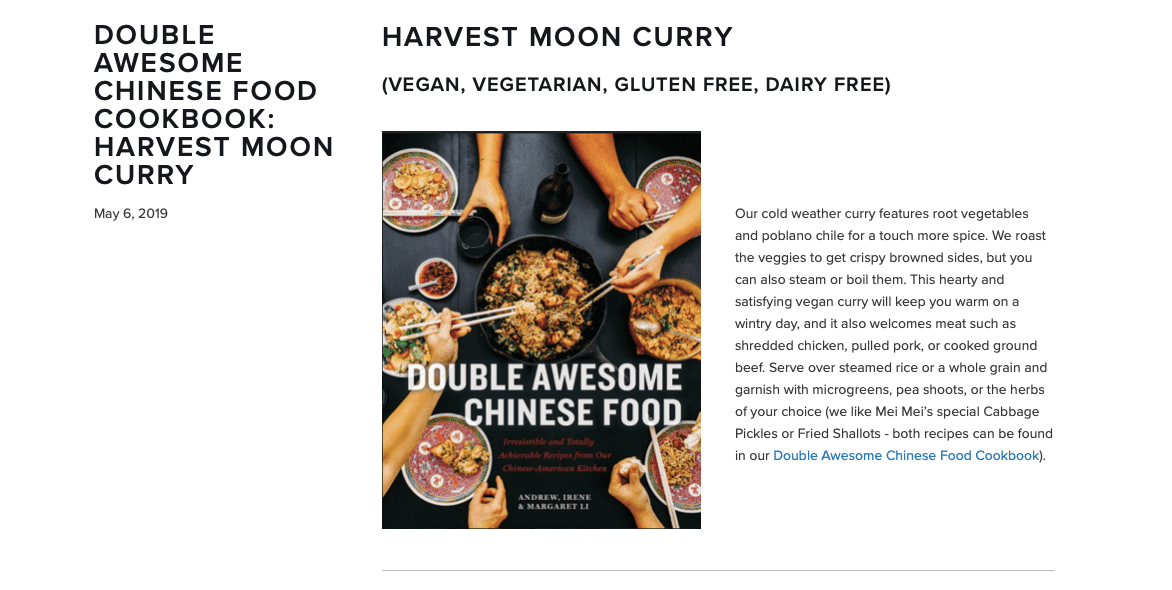 The food blog offers offbeat and actionable recipes with some mouth-watering pictures.
The food blog offers offbeat and actionable recipes with some mouth-watering pictures.
Content does not talk about products or services; branded content helps businesses to create meaningful niche conversations. Content can take different forms:
1. Blog Posts
2. eBooks
3. Original Research
4. Videos
5. Infographics
6. Interviews
7. Case Studies
8. Tutorials and Checklists
9. Memes
Businesses creating content are looking to build a loyal audience for what they publish; they act like media companies in the process.
Can Content Creators Be Copywriters or Vice Versa?
Yes, copywriters can be content creators and content creators can be copywriters but they can choose to become specialists or generalists.
Content creation and copywriting both require good writing, text editing, storytelling, and language skills. Content, however, requires many other skills like image/infographic creation, podcast creation, and video creation/editing, etc.
Take a look at the YouTube channel from Epipheo Studios, an animation video production company, for instance.
 The channel publishes animated videos on a variety of subjects that might interest its audience – life hacks, technology, government and politics, and health, etc. The content channel helps the production house to get more viewers while also helping it to showcase a portfolio.
The channel publishes animated videos on a variety of subjects that might interest its audience – life hacks, technology, government and politics, and health, etc. The content channel helps the production house to get more viewers while also helping it to showcase a portfolio.
Content creators require copywriting skills to write catchy headlines and CTAs. Here’s an example of a blog post headline copy:

Whether writing copy or creating content, you must have a deep understanding of the target audience persona and the voice of the brand. If you’re creating content or writing copy for the web, it helps if you have a basic understanding of keyword research and SEO.
With an understanding of the key differences in copy and content, professionals can work on their strengths and learn new skills.
Why Should a Marketer Know the Difference?
As a marketer, it’s essential to know how to use the two types of communication in order to create solid brand building strategies in the digital era.
1. Crafting Strategies
Content is the most pervasive form of marketing in today’s times. A large part of the audience today (Millennials and Gen Zers), is quick to skip and block ads.
82% of Gen Zers skip ads and 51% use ad-blocking technology. – Millward Brown
They’re happy, connecting with brands who give them something valuable – great content. A focussed content strategy is inevitable for successful marketing.
On the other hand, marketers who rely heavily on paid ad campaigns need to have a strong copy strategy. Let’s say you’re looking to get the maximum leads from Facebook ads, you’ll need a specialist to create ad copies like this one from ClassPass, the popular fitness studio chain:
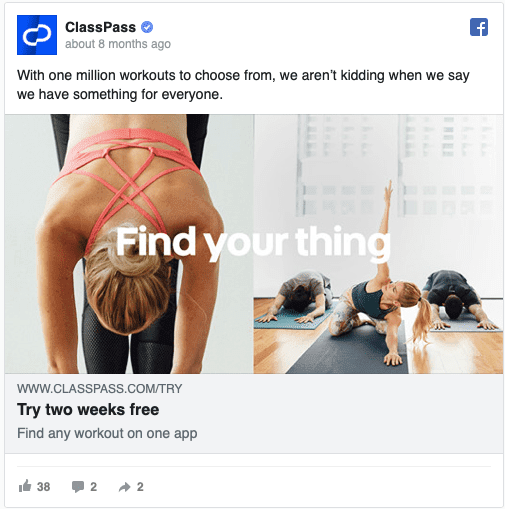 2. Optimizing Outcomes
2. Optimizing Outcomes
Unlike copy, content does not have to be “salesy”, it has to inform and engage the audience with the help of facts, stats, opinions, experiences, giveaways, games, and storytelling.
Great copy lays the foundation for conversion optimization in ads, websites, newsletters, or on blog posts.
Knowing the right approach for each communication format helps marketers to achieve their goals.
3. Hiring the Right People
Some writers who can do exceptional copy may not be so good at creating long-form content. Blog writers or video content creators may at times fail to create out-of-the-box-copy. Knowing these nuances helps marketers to hire and deploy the right talent.
An understanding of the two concepts helps to write accurate job postings and receive the right applications for an open position.
Over to You
While in the yesteryears, copywriters used to work in ad agencies and content creators would build their careers in media houses, it’s quite common today, for both the type of professionals to work in brand marketing teams (besides agencies and media houses).
Although there has been a huge shift from copy to content in the pure marketing sense, both have a distinct purpose. Understanding the black, white, and grey gives marketers the know-how to depute the right talent and work in a precise direction.
We hope you enjoyed this promoted piece as much as we did!


